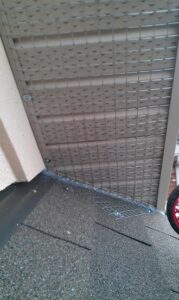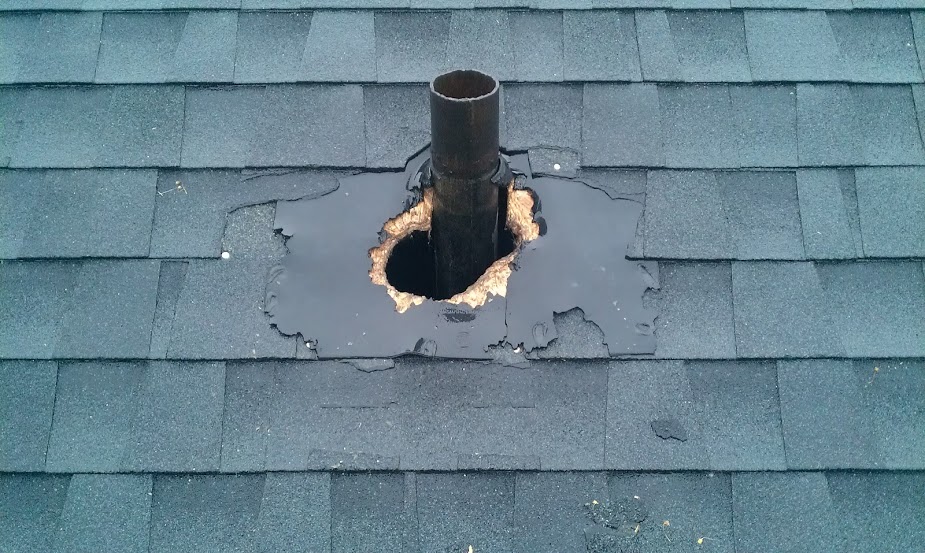If you regularly hear noises in your attic, you may be entertaining a raccoon houseguest in your home. These sneaky visitors use a variety of clever entry points to move into your attic. Once there, it can be difficult to have them safely and humanely removed. Avoid the health and safety hazards of a raccoon resident and schedule reliable wildlife removal services from our Skedaddle Montreal team.
Quiet Entry
Since they are nocturnal creatures, raccoons typically sneak into your home at night. They are noisy, troublesome pests, so it’s important to prevent entry. Here are some common areas of your home that are invitations for one of these furry neighbours:
- Roof-soffit intersections: Many houses have multiple roof lines that intersect. If you have dormers or other areas where the soffit meets your roofing material, it’s an easy entrance for a raccoon. These intelligent animals can crawl right up to the soffit and push up to enter your attic space.
- Roof edges: A compromised roof perimeter is easily turned into a doorway. The edge of your roof, particularly near an eavestrough, can be compromised over time from water damage. Raccoons have been known to chew and claw their way directly through your roofing materials.
- Plumbing mats, chimneys and roof vents: Any hole in your roof looks like an open invitation for a raccoon, particularly if there’s warm air escaping from it. These holes in your roof often have some sort of mat, fencing or cover protecting them from wildlife, but a determined raccoon can often damage them and create their own entrance.
Skedaddle has seen these and other unique entrance points thousands of times. With over 30 years of business experience, we know the indications of a raccoon entry point. First, we explore the signs and hazards of a noisy raccoon guest in your attic and find out how we can safely and humanely evict your unexpected tenant. Afterwards, we use proven techniques to repair your home and prevent further critter issues.
Noisy Residency
 Raccoons enter homes to have a litter, nurse their babies and create a safe, warm dwelling. Unfortunately, they don’t make good house guests. Bill Dowd, President of Skedaddle, warns that raccoons in your attic often start “chewing electrical wires, trampling down insulation, urinating, and defecating, putting you and your family at risk.”
Raccoons enter homes to have a litter, nurse their babies and create a safe, warm dwelling. Unfortunately, they don’t make good house guests. Bill Dowd, President of Skedaddle, warns that raccoons in your attic often start “chewing electrical wires, trampling down insulation, urinating, and defecating, putting you and your family at risk.”
These issues are hazardous for your health and your home. Damaged cables can cause an electrical short and compromise your home’s wiring infrastructure, or even become a fire hazard. Fibreglass insulation uses air pockets to insulate your home, so compressed insulation is ineffective and needs to be replaced.
In terms of your health, raccoons can carry a number of diseases and insects. Their urine and feces can spread illnesses and damage drywall, sheathing and framing lumber in your attic. A raccoon living in your attic can deposit ticks, fleas and other infectious pests into your home.
As a nocturnal animal, raccoons make audible thumping, scratching and other sounds in the night. Listen for these sounds near your attic space and contact Skedaddle immediately for a professional removal plan. Touching a raccoon can expose you to disease and insects. Furthermore, even though raccoons are generally timid in the wild, they can become very territorial if you try to remove them from their newly acquired home. These animals are known to bite, scratch and claw their way to safety.
Schedule Humane Wildlife Removal in Montreal
At Skedaddle, we use proven, humane techniques to remove and safely prevent further raccoon entry to your attic. Explore our raccoon services today to learn more about our prevention strategies. Scoot the raccoon with the help of a qualified local team, and protect your home without harming the local wildlife population. Let us compassionately evict your new house guests and ensure your attic communicates “No Vacancy” to other raccoons in your area.



